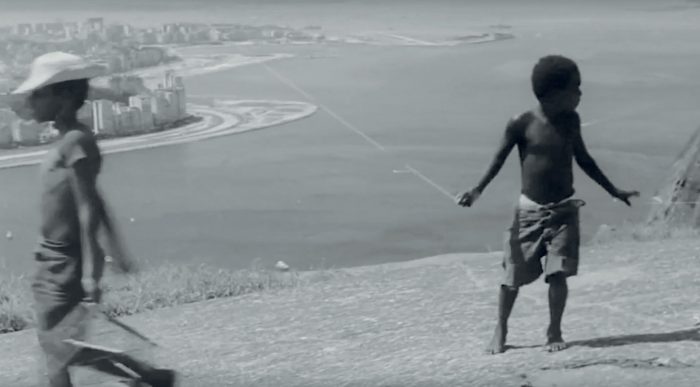Swedish filmmaker Arne Sucksdorff arrived in Brazil in 1962, when filmmaking was dominated by the desire to turn the camera into an instrument of political intervention and awareness of the national condition. Working on a project developed by the Brazilian Ministry of Foreign Affairs and the United Nations Educational, Scientific and Cultural Organization (UNESCO), his mission was to train filmmakers in the new technology of location sound recording that was revolutionizing world cinema. Here in Brazil, the documentary filmmaker worked with young people interested in Cinema Novo. To give the reader an idea of what the scene was like at the time, the year he arrived here the film O Pagador de Promessas (The Given Word), by Anselmo Duarte, had received the Palme d’Or at Cannes, and Barravento by Glauber Rocha, and Arraial do Cabo by Paulo César Saraceni were being exhibited as films nominated for young filmmakers awards. And 1962 was also the year Cinco Vezes Favela (Favela times five), a series of short films produced by the Center for Popular Culture of the National Students Union (UNE), was premiered.
When he landed in Brazil, Sucksdorff (1917–2001) had already made a name for himself with animal documentaries, such as the 1941 short film A Summer Tale, which shows life on the banks of a lake on the outskirts of Stockholm. But his work was still little known here and, as a fish out of water, he ended up reversing the usual stereotypes that associated Europeans with the avant-garde, and things primitive with South America. “In this case, the Cinema Novo gang was the vanguard,” observes Esther Império Hamburger, a professor in the Department of Film, Radio, and Television at the School of Communications and Arts of the University of São Paulo (ECA-USP), who is making a documentary that includes interviews of former students and others who lived and worked with the Swede in Brazil. She explains that even in regards to technical questions brought about by the cutting-edge equipment, there were tensions.
One example concerned the recording of location sound using the Nagra tape recorder. Such equipment was revolutionizing filmmaking methods around the world, because allowing quality sound to be captured simultaneously with the images prevented the need for studio reconstructions later. This supported the ideal of the handheld camera with which the devotees of the Cinema Novo were identified. “But Sucksdorff used a tripod, dolly, and artificial lighting, so his ability to capture spontaneous movement was more limited than in Direct Cinema,” Hamburger points out, reinforcing the “academic” character of the filmmaker’s relationship to the image.
Although he was an award-winning director—he had received the Oscar for his short film Rhythms of the City in 1948—to this day it’s not known exactly why Sucksdorff was chosen for the project. Filmmaker Eduardo Escorel, who attended the course Sucksdorff taught between November 1962 and February 1963 in Rio de Janeiro, classifies him as “unlucky.” In a series of texts dedicated to the “Sucksdorff mission,” drawn up in 2012 from UNESCO documents, his former pupil says that the Swede was not included among the film directors initially shortlisted for the project, which included better-known names like French filmmaker François Reichenbach (1921–1993).
Even so, his course was highly sought after. In the book Mito do cinema em Mato Grosso: Arne Sucksdorff (A myth of the cinema in Mato Grosso: Arne Sucksdorff), published in 2008, filmmaker Luiz Carlos de Oliveira Borges notes that more than 230 students were registered. After two qualification screenings, only 18 participated in the practical stage, which fewer than 10 would actually finish. Under the direction of fellow pupil and journalist Vladimir Herzog (1937–1975), as its final project the group produced the documentary Marimbás, a short film that used equipment brought in specifically for the course. This was, in fact, one of his legacies: outside school hours, Sucksdorff often loaned the Nagra to other filmmakers. And important films of the time, such as Vidas Secas (Barren Lives) by Nelson Pereira dos Santos, were completed at the editing table acquired by the Ministry of Foreign Affairs.

